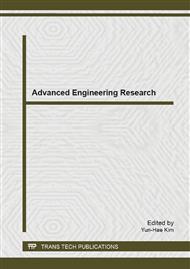p.1242
p.1251
p.1259
p.1266
p.1272
p.1277
p.1285
p.1292
p.1296
Fault Diagnosis Method Based on KPCA and Selective Neural Network Ensemble
Abstract:
Aiming at the problems of less study sample, large network scale and long training time existing in current fault diagnosis field, we develop a new method based on KPCA and selective neural network ensemble. First, reducing the data size by using KPCA to extract the sample features. Then achieving a selective neural network ensemble method based on improved binary particle swarm optimization algorithm (IBPSOSEN), and combining the two methods for fault diagnosis. In selective neural network algorithm, bagging method is used to take a number of different training sets of fault samples to solve the problem of less fault samples. Finally, simulation experiments and comparisons over Tennessee Eastman Process (TE) demonstrate the effectiveness and feasibility of the proposed method.
Info:
Periodical:
Pages:
1272-1276
Citation:
Online since:
April 2014
Authors:
Price:
Сopyright:
© 2014 Trans Tech Publications Ltd. All Rights Reserved
Share:
Citation:


